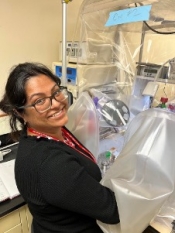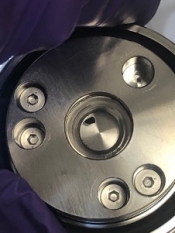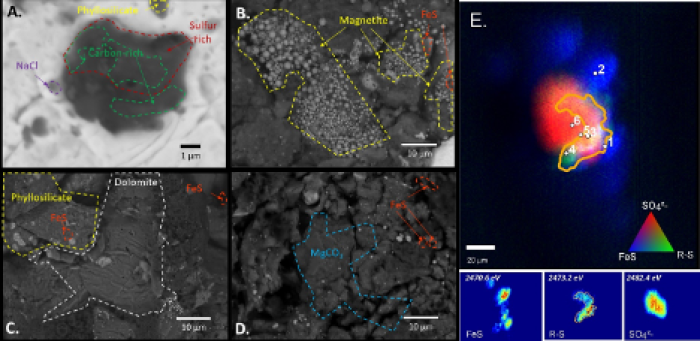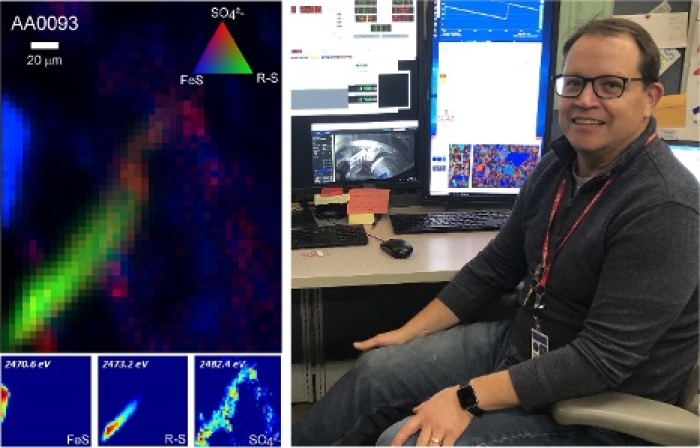ASU researchers explore sulfur compounds in samples from asteroid Ryugu
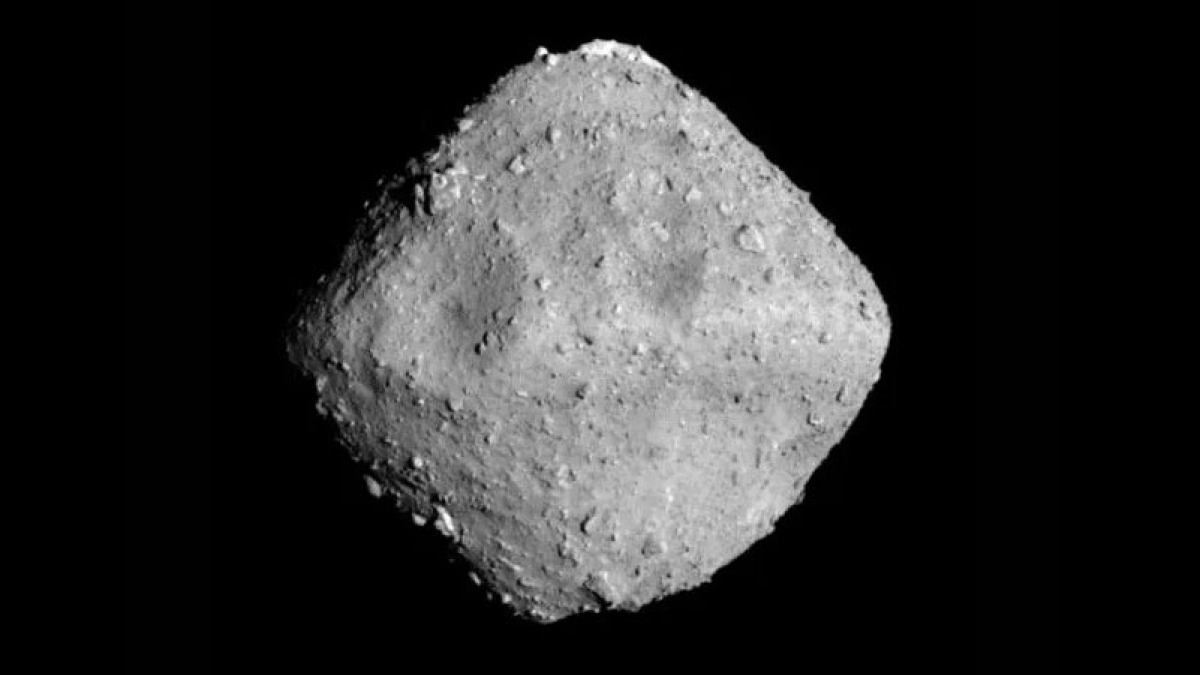
Asteroid Ryugu. Image courtesy JAXA/U of Tokyo/Nagoya U/ChibaTech/Meiji U/U of A/AIST
A team of researchers led by cosmochemist Maitrayee Bose from Arizona State University has investigated the sulfur chemistry in samples from the surface of asteroid Ryugu.
These samples were collected in February 2019 by the Japanese Aerospace Exploration mission Hayabusa2, which returned to Earth on December 5, 2019, bringing back the samples in a capsule.
The results of their study have been recently published in Science Advances.
"We found a large diversity of sulfur-bearing organic molecules in the samples retrieved from the surface of the C-type asteroid Ryugu, and a sulfate mineral that is isotopically anomalous,” said Bose, an associate professor with ASU’s School of Earth and Space Exploration.
The team's research indicates that undifferentiated asteroids have signs of events that happened both before our solar system formed — during the molecular cloud phase around 4.6 billion years ago, defined as time zero (t=0) — and after the asteroids themselves had formed about 2 to 3 million years later, after time zero.
The major focus of the team’s efforts was to identify and determine the composition of sulfur-bearing minerals and organics produced by fluid alteration in two Ryugu particles each about 2.1 mm in size (similar in size to the tip of a basic crayon), and to infer the fluid characteristics that operated on Ryugu. The team also studied two meteorites, Murchison and GRA 95229, both rich in organics, to compare to the Ryugu results.
The opening of the sample container was done within an oxygen-free anaerobic chamber at the SLAC National Accelerator Laboratory in Menlo Park in California. This approach enabled the characterization of the two Ryugu particles without being influenced by contamination or oxidation.
In Ryugu particle A0070, the team found a 40 by 40 µm sulfate grain with a partial coating of thiol, in proximity to sulfides. A second thiol-rich domain was found within particle A0093 that shows evidence of sulfate and a thiol domain identified as methionine sulfoxide.
Thiols are the simplest sulfur-bearing organic compounds, and this is the first in situ identification of thiol in Ryugu particles. These phases were identified using synchrotron micro X-ray fluorescence imaging and micro X-ray absorption near edge structure spectroscopy at the federally funded SLAC National Accelerator Laboratory.
“Synchrotron radiation affords unique imaging capabilities of sulfur species at high spatial resolution, and beamlines at SLAC/SSRL are optimized for working across multiple scales. Finding the unambiguous signal from organo-sulfur species in these precious Ryugu return-mission particles was incredibly exciting,” said Rob Root, co-author and associate research professor at University of Arizona.
To determine the origin of calcium thiosulfate, the team used Caltech’s Nanoscale Secondary Ion Mass Spectrometry (NanoSIMS 50L) to measure nitrogen, oxygen and sulfur isotopes. The oxygen isotopic compositions of the calcium thiosulfate grain are similar to those of olivine and pyroxene minerals measured in Ryugu. More consequentially, the sulfate grain is anomalous in both its nitrogen and sulfur isotopes.
The isotopically anomalous sulfur isotopes are attributed to isotopically selective photodissociation of hydrogen sulfide vapor in warm gas. Photodissociation refers to a photochemical process due to ultraviolet light, strongly related to the production of sulfanyl radicals and free sulfur. This process produces isotopically heavy elemental sulfur that is accreted into ices, ultimately accreted by chondrite and Ryugu parent bodies and mobilized by aqueous alteration.
The team showed that an isotopically anomalous sulfur reservoir, originally from the molecular cloud material that our solar system is composed of, was widespread.
“A similar reservoir of isotopically anomalous sulfur had been seen before in two meteorites that formed near Jupiter, but Ryugu formed much farther from the sun, near where comets formed, and where the sun’s UV light was too weak for photochemistry. These two facts strongly suggest that the UV irradiation took place in the sun’s molecular cloud, before the solar system had formed,” said Steve Desch, co-author and professor at ASU’s School of Earth and Space Exploration.
Part of this study was done at ASU’s Core Research Facilities and Bose’ labs equipped with high-end clean rooms with various instrumentation capable of analyzing dust grains from other solar system bodies. Bose is the principal investigator of the NanoSIMS facility with funding from the National Science Foundation, and her research also includes investigating Venus and Ceres analogs.
Samples from return missions offer superb opportunities to learn things about other planetary bodies in our solar system that cannot be determined by observations using spacecraft in orbit around the object. The returned samples can be kept pristine (also for future generations), and studied in terrestrial laboratories, under highly controlled conditions.
"Our study clearly shows that organosulfurs like thiols are likely destroyed in meteorites quite promptly after their falls, or during sample processing," Bose said. “Only because these pristine Ryugu samples can be analyzed in state-of-the-art facilities can we discern the sulfur chemistry of the earliest stages of the solar system.”
Additional co-authors include Yunbin Guan, director at the Caltech Microanalysis Center; Axel Wittmann, associate research scientist at ASU’s Eyring Materials Center; doctoral candidate Jacob Eaton; and Thomas Skrmetti, undergraduate student in SESE’s astronomy and planetary science online degree program.
More Science and technology

Cracking the code of online computer science clubs
Experts believe that involvement in college clubs and organizations increases student retention and helps learners build valuable social relationships. There are tons of such clubs on ASU's campuses…
Consortium for Science, Policy & Outcomes celebrates 25 years
For Arizona State University's Consortium for Science, Policy & Outcomes (CSPO), recognizing the past is just as important as designing the future. The consortium marked 25 years in Washington, D…

Hacking satellites to fix our oceans and shoot for the stars
By Preesha KumarFrom memory foam mattresses to the camera and GPS navigation on our phones, technology that was developed for space applications enhances our everyday lives on Earth. In fact, Chris…
